The Auguste Escoffier School of Culinary Arts has strong roots in French cuisine. With campuses in Austin, Boulder, and an online program, we can bring a French culinary school approach to our classical-yet-current curriculum.
Inspired by our namesake, Auguste Escoffier, our courses may give students a versatile foundation in French cooking that can be applied to advanced techniques from a variety of cultures! Here are some of the most useful French cooking techniques for an aspiring chef to hone—ones that students at Escoffier may get to explore.
1. The Foundational Mirepoix
Many culinary traditions have a core aromatic profile that comes up again and again as the basis for various dishes.
In French cuisine, it’s the mirepoix, a finely diced blend of two parts onion, one part celery, and one part carrots, lightly cooked in butter or olive oil. To make the perfect mirepoix, you must cook your veggies slowly in order to release the flavors without browning or caramelizing them.
The French are far from the only chefs to have a foundational aromatic blend! In Cantonese cooking, you’ll find many recipes start with scallions, ginger, and garlic. The Italians have the soffritto, with the same veggies as mirepoix, but cooked in olive oil. In Cajun and Creole cuisine, the “Holy Trinity” of green bell pepper, onion, and celery forms the basis for étouffée, gumbo, and jambalaya.
While Escoffier is a French culinary school, students may also explore additional cooking traditions in their World Cuisines course!
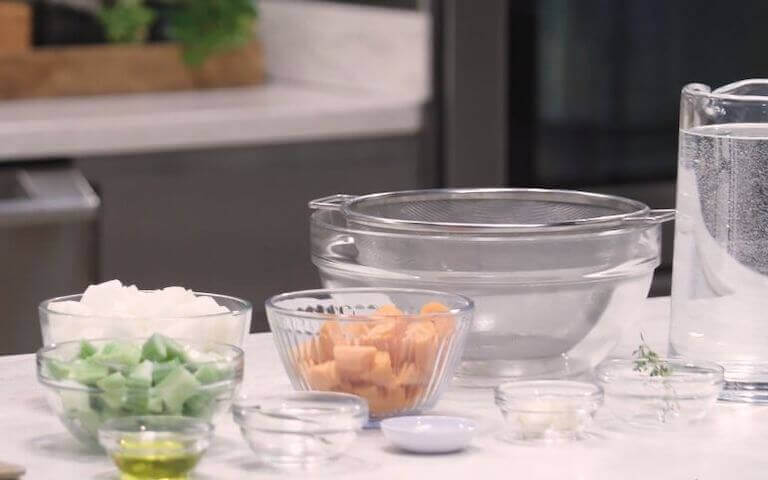
Mise en place for a mirepoix.
2. The Perfect Roux
As a starting point for many of the Mother Sauces (see the next section) the roux is an indispensable French cooking technique. A perfect roux helps to thicken a liquid, stock, or sauce–adding thickness without lumps.
The ingredients for a roux couldn’t be simpler, made from equal parts flour and fat—often butter. The trick is in the heat, the movement, and the timing. A roux should be cooked over medium heat, stirring frequently, until it’s just the right color.
The only difference between a blonde roux, brown roux, and dark roux is in the timing. Leave it on the heat too long and you can go beyond your desired color. The one solution? To toss it out and start over!
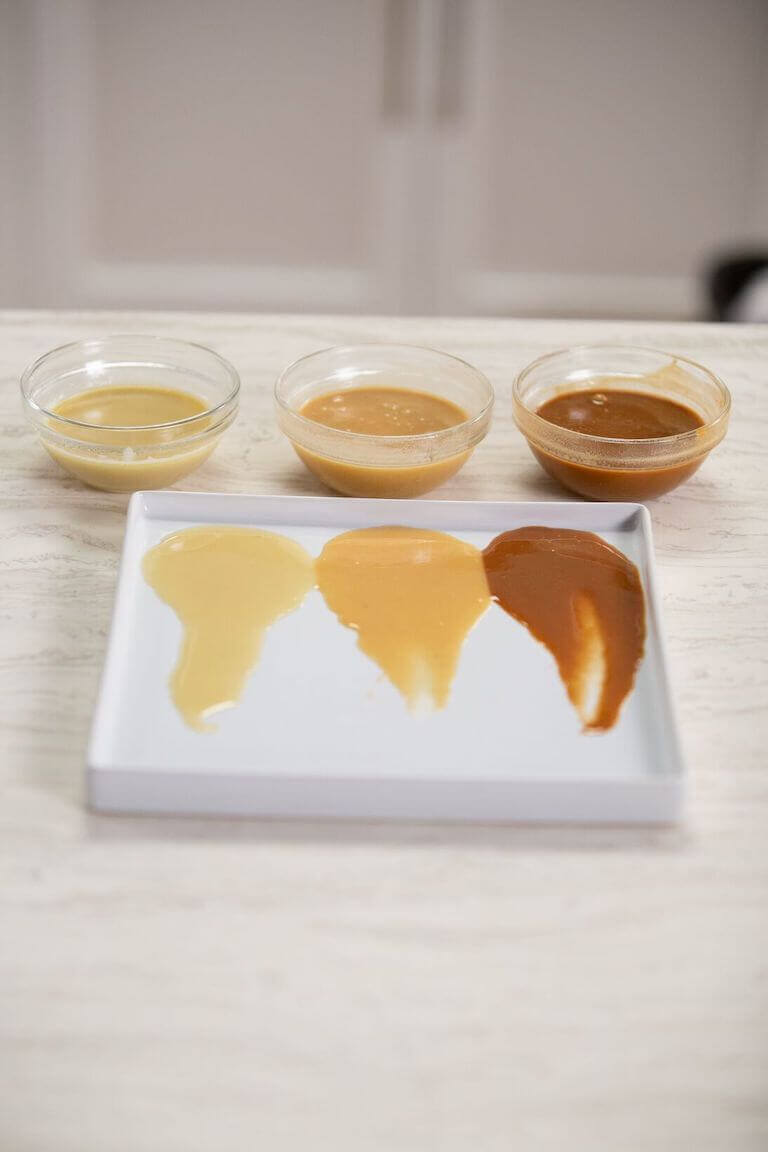
From left to right: blonde roux, brown roux, and dark roux
3. The Five Mother Sauces
The five “mother sauces” in French cuisine form the basis of dozens of additional sauces (often called “small sauces” or “secondary sauces”).
The four original mother sauces were béchamel, velouté, espagnole, and tomate. These were selected by legendary French chef Marie-Antoine Carême, the man who developed the concept of haute cuisine. Later, hollandaise was added to the lineup by Auguste Escoffier himself.
When one knows how to make these, a whole world of sauces opens up! These sauces and the secondary sauces can be found on pastas, proteins, vegetables, and much more.
The Five Mother Sauces
- Bechamel: A roux of flour and butter with milk
- Espagnole: A brown stock (veal or beef) flavored with mirepoix and thickened with a roux
- Hollandaise: Made from clarified butter, warm egg yolks, and an acid like vinegar or white wine
- Tomate: Made from rendered pork, aromatic veggies, tomatoes, stock, and ham bone for flavor
- Velouté: A white stock (chicken, veal, or vegetables) flavored with mirepoix and thickened with a blonde roux
4. Delicate French Cuts
In French cooking classes, students may learn a number of specialty knife skills that can help them make short work of their herbs and veggies. These techniques help cooks to reduce irregular foods into uniform shapes for even cooking.
To julienne, for example, is to cut vegetables into small, uniform matchsticks. These cook quickly and evenly and are perfect for a light sautée. The batonnet is similar in shape to the julienne, but it’s a bit shorter and thicker.
A brunoise is a fine dice, often used in sauces as their small size releases flavor quickly. A small dice is a slightly larger cube than a brunoise.
The chiffonade is a method of cutting herbs and leafy vegetables into fine strips. To do this, stack leaves on top of each other, and roll tightly. Then slice perpendicular to the roll for long, thin ribbons.
The differences between these various cuts can be subtle, but they’re important distinctions in French cuisine!
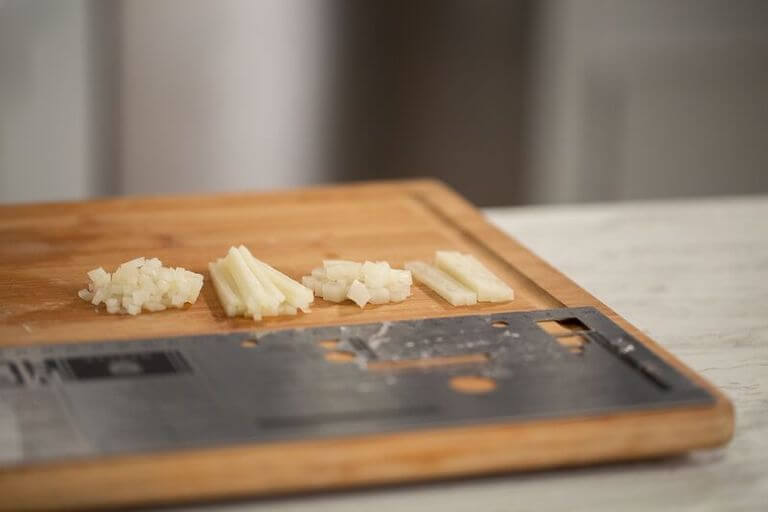
From left to right: brunoise, julienne, small dice, batonnet

Take the Culinary Career Survey
We’ve compiled a checklist of all of the essential questions into one handy tool: career options, culinary interest surveys, educational opportunities, and more.
5. Flavorful Déglacer
Much of French cooking comes down to simplicity. Rather than adding additional ingredients or seasonings for extra flavor, French cooking classes teach students to work with what they have.
One way to do that is with the method of déglacer, or deglazing. To deglaze is to release the browned juices and fats from the bottom of your pan by adding a bit of stock, water, or wine and heating to a low simmer. As the liquid heats, scrape the bottom of the pan with a wooden spoon to release the stuck bits.
Deglazing pulls the concentrated flavors and fats from the pan which can then be re-used for a delicious pan sauce or demi-glace to pour over the protein that you’ve just cooked!
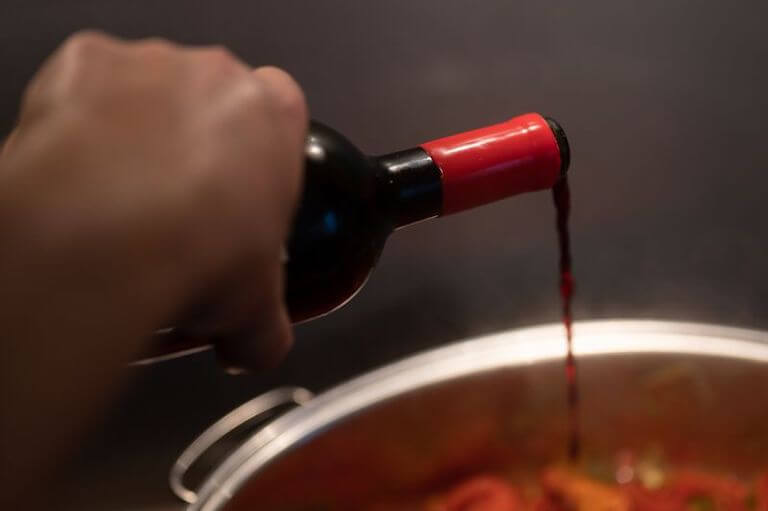
6. Cooking “En Papillote”
A great deal of modern cooking terminology is in French, which can make simple concepts sound complicated. Cooking “en papillote” sounds complex, but it simply means to cook “in paper.”
This technique involves tucking the food into a packet of parchment paper. It’s ideal for tender proteins like halibut, trout, chicken breast, and pork chops. You can also layer finely cut veggies and aromatics atop your protein to impart their flavors to the finished dish. The packet not only keeps the food moist but contains the natural juices to keep the flavor from running away.
This simple cooking method requires little added fat since the steam remains inside the packet and adds moisture. The tricky parts of cooking en papillote? Creating a tight seal on your parchment, and cutting your veggies and aromatics to size so they’ll finish cooking at the same time as the protein.
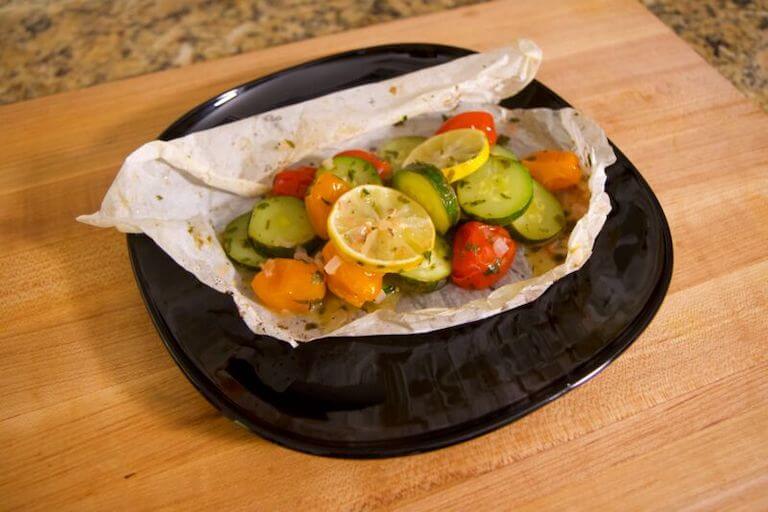
Vegetables en papillote
7. The Bouquet Garni
In some French recipes, herbs impart a bit of their flavor to a stew, sauce, or stock…but they’re not meant to be eaten. So how can you remove individual ingredients from the greater whole?
The answer is the bouquet garni, a common method of adding a “garnish bouquet” to a dish that lets you take it out after cooking.
There are two prime methods of creating the bouquet. With stemmed and leafy herbs like rosemary, thyme, and bay leaf, the herbs are tied together in a bundle with a bit of kitchen twine. For dried herbs and small pieces like peppercorns, the pieces are tied up into a square of cheesecloth that can be removed after cooking.
This is a perfect way to get peppercorn flavor in your dish without biting into one!
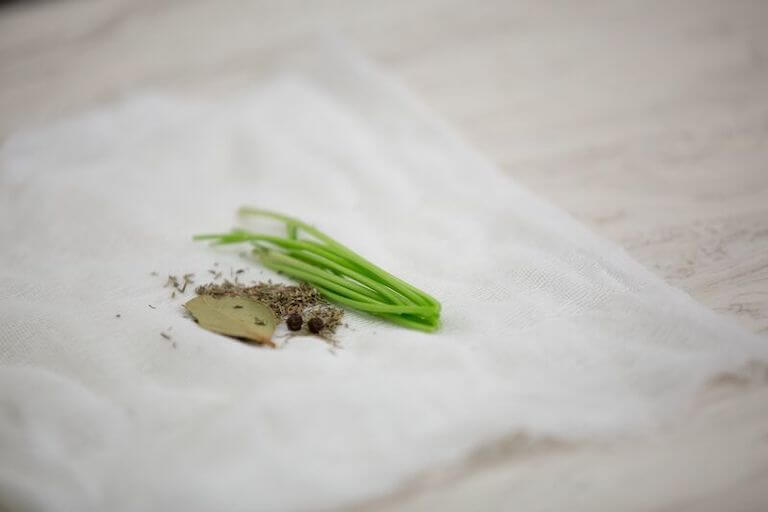
A bundle of loose herbs in cheesecloth.
French Cuisine Has Spread Worldwide
Why focus on the techniques you find in French cooking classes? French cuisine has expanded far beyond the country’s borders, through both its popularity and through the colonization of other countries in the 19th and 20th centuries. Over the years, French cooking has become an integral part of the cuisines of cultures around the world, which makes it the ideal framework for culinary foundations.
While you can learn a great deal on your own, you may find a more comprehensive education when you enroll in a French culinary school like Escoffier. Find out what you could learn in a culinary arts degree or diploma program!
To learn more about culinary skills and techniques, try these articles next:



